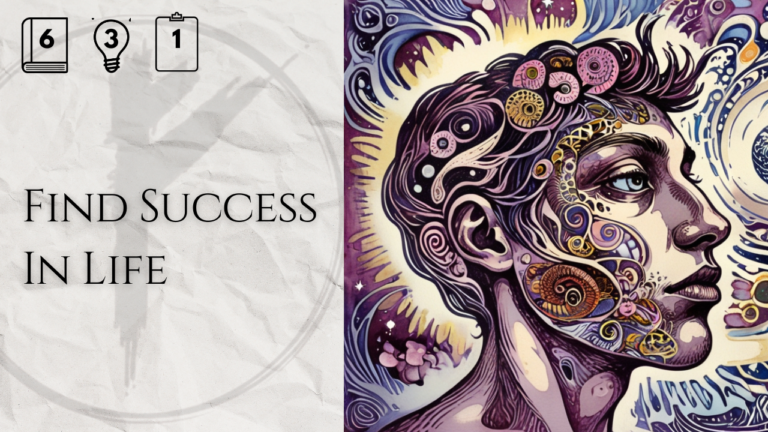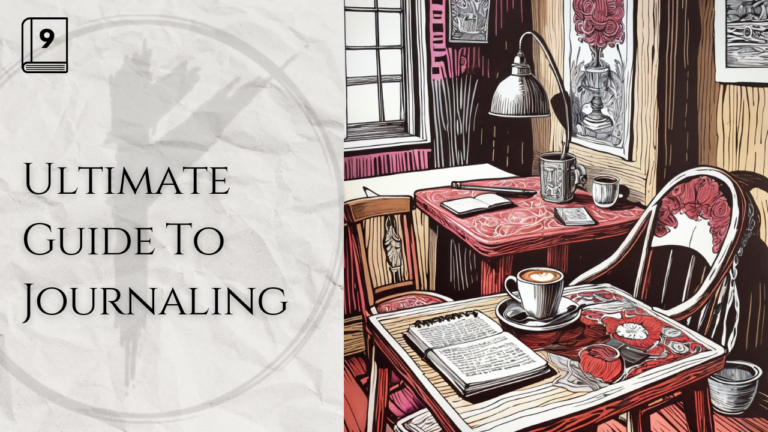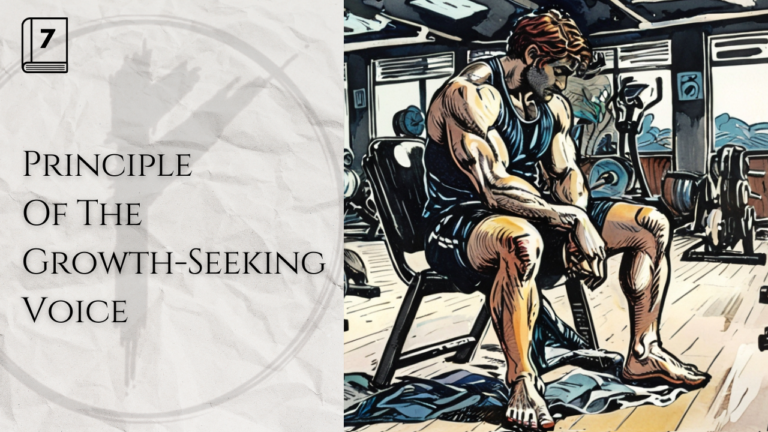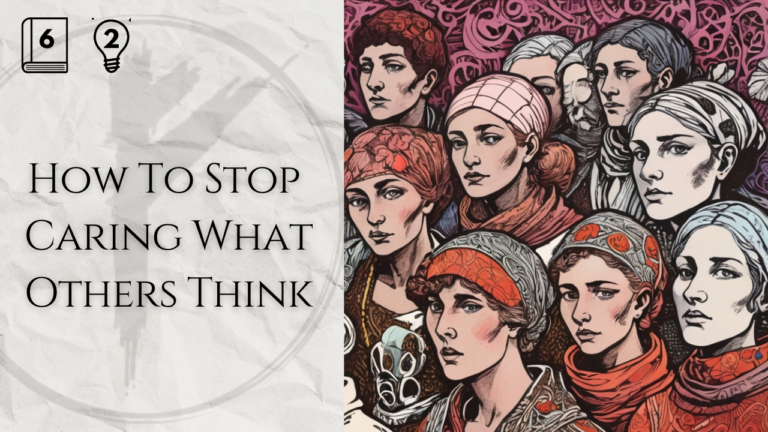Today, I’m going to tell you about detachment in meditation, a benefit, that is extremely useful in day-to-day life, not woo-woo at all, and actually, for me now the foundation of the whole practice.
Let’s break it down in a simple and practical way for you. So, let’s get started, okay?
Meditation’s Spiritual Perception
Meditation can seem like this super spiritual, abstract concept which can make it feel a bit too esoteric. I totally get it. With all those Spacey terms like mindfulness and introspection floating around.
Grasping the true concept of meditation can be a bit challenging, especially when starting out.

The Puzzle of Meditation
I encountered all these descriptions of tingling sensations in my limbs or warm energies, and I was like, “Huh, am I missing something here?” I tried, but I really couldn’t feel anything, so it seemed a little bit like this woo-woo puzzle that I couldn’t solve.
However, there are scientifically proven benefits like reduced stress, improved focus, and even an increase in gray matter density in our brains. So I knew I have to find a way to implement it in my life.
The Game Changer: Detachment in Meditation
The big benefit of meditation that I want to share with you is Detachment in meditation. It’s the buzzword here.
When you meditate, you are training yourself to detach from your thoughts, feelings, emotions, and even desires. At its core, meditation is about observing thoughts, without getting caught up in them.
The Path to Freedom
As Buddha already said:
Buddha“Attachment leads to suffering, detachment leads to Freedom.”
While he was probably talking about things here, this also applies to our inside.
The Dalai Lama said:
Dalai Lama“To find inner peace, you must detach from the thoughts that disturb your mind.”
But trust me, it’s easier said than done. It is a simple concept, but it is not easy at all, which is why people need to practice it as a help to detach from thoughts.
It is very common for many meditation practices to focus on your breath. This way, you won’t give the little monkey in your mind much space to jump around from thought to thought.
In the fantastic book, “Designing the Mind”, author Ryan Bush writes about meditation:
Ryan Bush in “Designing the Mind”“This practice will gradually guide you to a non-attached awareness of your own internal processes, often beginning with physical sensations like the breath and working up to thoughts and emotions. It trains you to notice when your attention gets sucked back into the captivating narrative your cognition presents to you.”
Later in his book, he also quotes writer and speaker Julia Galef:
Julia Galef“Meditation seems to train you to stop automatically identifying with all of your thoughts, so that, for example, when the thought ‘John’s a jerk’ pops into your head, you don’t assume that John necessarily is a jerk. You take the thought as something your brain produced, which may or may not be true, and may or may not be useful.”
The Train Station Analogy

I think of it like being at a train station and constantly passing trains representing your thoughts—they come and go. You actually have the choice to step onto any train or simply observe them passing by. It’s all about not getting entangled in the thoughts that arise.
It’s up to you to decide whether to hop on and let it take you somewhere or let the train pass by.
Breaking the Automatic Assumptions
We often automatically enter certain trains because we are used to them. In a strange way, they feel comfortable to us—even the bad ones.
We often find ourselves jumping into those thought trains without even realizing it. It’s so easy to get caught up in our thoughts, especially the negative ones. That’s where meditation comes in—it trains us to become aware of this pattern, to recognize when we’re getting on a thought train, and to step back out of it.
The Practice of Detachment
As I said, it is basically practicing the ability to step out of the thought train and return to the train station of our mind. You are not happy or sad; you have a happy or sad feeling. You’re not angry; you are in an angry feeling and let it take the upper hand away—the operator.
Taking Back Control
Most of the time, we are not controlling our brain; it actually controls us. We have to realize this and take back control.
Spiritual teacher Eckhart Tolle writes in his book “The Power of Now“:
Eckhart Tolle“The mind is a superb instrument if used rightly. Used wrongly, however, it becomes very destructive. To put it more accurately, it is not so much that you use your mind wrongly – you usually don’t use it at all. It uses you. This is the disease. You believe that you are your mind. This is the delusion. The instrument has taken you over.“
The Practice of Observing
Now, as I said, I know it’s not easy; trust me, it’s not. The concept is very simple, but the practice takes time and effort.
When you sit down for your meditation practice, whether it’s for 10 minutes or 15 minutes, you’re training yourself to observe your thoughts and not get tangled up in them. It’s a practice of constantly stepping back and realizing, “Hey, I’m the observer here; I don’t have to ride the thought trains that come my way.”
Amishi Jha’s Analogy
There’s a book by Amishi Jha, who is a director of contemplative neuroscience and professor of psychology at the University of Miami. The book is called “Peak Mind,” and in it, she writes about how we constantly lose focus during meditation practice and basically enter some thought train. We have to come back by remembering that we are the observer. She made an analogy that stuck with me ever since then.
Amishi Jha“I want you to picture yourself dribbling a basketball: The ball drops away from your hand, and bounces right back. Your focus shifts away from the task-at-hand, and then comes back.”
Seeping Into Everyday Life
This detachment in meditation and observing thoughts in meditation goes beyond just your meditation session. It can and will take some time, but eventually, it seeps into your everyday life. You become the operator of your mind and not the other way around. You have the power to choose which thoughts to focus on and which ones to let go of because you internalize the concept of your thoughts and your emotions not being you.
Mastering Your Emotions
Author Thibeaut Meurisse says in his book “Master Your Emotions“:
Thibeaut Meurisse“Whenever you experience a negative emotion, simply observe it with as much detachment as you can. Don’t engage in a story revolving around that emotion.”
Basically, when you meditate, it’s like a mental chin workout—building your observation muscle. This strained muscle can then be used in everyday life.
It goes beyond just not wanting to think about something for a couple of minutes or so. It’s about recognizing that our thoughts, feelings, and emotions can shape our entire day and even our lives.
In Ethan Kross’s book “Chatter” he writes about the role detachment in meditation plays in helping people control their emotions:
Ethan Kross“Researchers at Stanford, for example, linked adopting the perspective of a detached observer with less rumination over time.“
You’ll notice moments when negative thoughts arise and instead of automatically – which is the status quo for most people – entering that train of thought you will remember that you are the observer. You’ll realize that dwelling on past regrets or worrying about the future takes you away from the present moment.
By observing thoughts in meditation and letting go, you remain anchored in the Here and Now.
The Key to Finding Peace: Detachment
Ethan Kross“Researchers at Stanford, for example, linked adopting the perspective of a detached observer with less rumination over time. “
(Freie Übersetzung:
“Forscher an der Stanford Universität haben beispielsweise das Einnehmen der Perspektive eines distanzierten Beobachters mit weniger Grübeln im Laufe der Zeit verknüpft.”)
This is also one of the main points of Eckhart Tolle’s book “The Power of Now“.
By letting thoughts go that would take you to the future or past, you anchor yourself in the present—the only time that actually exists and is not just the construct of your mind like the past or future.
Eckhart Tolle“You are not your thoughts; you are the awareness behind them.”
He also says:
Eckhart Tolle“To realize that you are not your thoughts is when you begin to awaken spiritually.”
And in “The Power of Now” Eckhart Tolle writes:
Eckhart Tolle in “The Power of Now”“Whenever you are able to observe your mind, you are no longer trapped in it.”
A Journey to Awareness
Consider this: our moods and actions are heavily influenced by our thoughts and emotions. Constantly indulging in negative ones can lead to spiraling down into a gloomy state and it can even lead to depression.
With meditation and this concept I’m talking about here we learn to step back and observe our thoughts, realizing that we don’t have to enter the train. We theoretically have the power to let it go and remain in control.
It might not always work and probably won’t for the majority of instances at first, but every little success here can take you to a better place.

Choosing Positive Energy
Entering negative thoughts and feelings piles up and so does letting go of them and instead entering positive ones if you choose to.
You might know the saying “Energy flows where attention goes“, so if you constantly feed into negative thoughts, you’re just fueling that negativity fire.
But if you separate yourself from those thoughts and even train to actively shift your attention to positive thoughts and experiences instead, your energy follows suit.
By consciously choosing what thoughts to focus on, you direct your energy toward positive and productive aspects of your life.
To have this option means freedom.
A quote says:
Mooji“To be truly free, you must detach from the thoughts and emotions that enslave you.”
It’s like rerouting your mental GPS to a better destination. Or, to stick to the analogy, boarding the right trains to get to a different place in life.
The Power of Responding
You can’t control what thoughts pop into your head just like you can’t control the weather outside.
That’s why a lot of people feel like simple affirmations don’t work for them. You can’t control what comes to your mind but you can control how you respond to it by letting go or entering that thought and that’s where the magic lies. And meditation is your training ground for this.
There’s this quote by Jon Kabat-Zinn:
Jon Kabat-Zinn“You can’t stop the waves, but you can learn to surf.”
And this separation between things we can’t control (outside things or thoughts that pop into our head or emotions that may arise) and the things we can control (our reaction to them, do we follow and dwell, or do we accept them and let them go) is one of the main concepts of stoicism.
If you have read some of my articles, you know about my interest in stoicism, so this is important for me to point out.
Conclusion: You Are the Operator
So, my friends, remember:
You are not your thoughts.
You are the one who decides which trains to step into.
You are the operator.
Let me know what you think about those concepts in the comments!
Do you know good books to read about this topic or have you made your own experiences?
Then please share your insights!
If you enjoyed this, let me know.
Have a great day, brother.
Books mentioned in this post
“Chatter” by Ethan Kross
“The Power of Now” by Eckhart Tolle
“Designing the Mind” by Ryan Bush
“Master Your Emotions” by Thibaut Meurisse
“Peak Mind” by Amishi Jha







